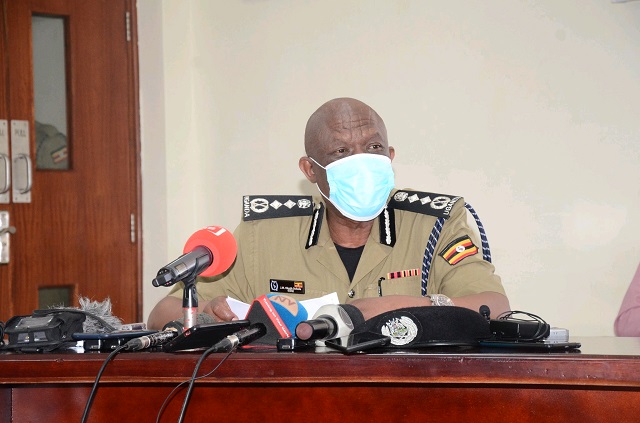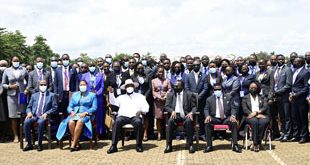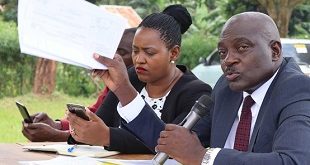
Kampala, Uganda | THE INDEPENDENT | A week ago, the Inspector General of Police Martin Ochola, ordered for the implementation of President Yoweri Museveni’s 2019 directive of concentrating police officers at the sub-county level, as opposed to scattering them at posts and small stations.
So far, 129 police posts have been merged, according to police spokesperson Fred Enanga. Police say the merged posts will serve as a pilot study for the countrywide implementation of the sub-county policing model.
Museveni said the sub-county policing model that was introduced by the British colonial governments would enhance police visibility, and automation of policing services through advanced technology, consolidating the available resources and assets at the sub-county.
Ochola decided to implement the sub-county policing model following incidents where armed thugs raided posts and small stations, killing police officers and taking their guns.
Enanga explained that the implementation of the sub-county policing model would involve the establishment of at least one police station per sub-county, deployment of not less than 20 personnel, deployment of motorcycle squads, installation of counter phones that are popularized among residents, dedicated counter response teams, critical facilities, modern lockup facilities, better accommodation, and medical services.
“We want to assure the public that the restructuring and reorganization are in the pilot phase,” Enanga said. “A full spectrum of police services to the entire sub-county will continue to be provided in a more effective and efficient manner. The sub-county police will handle emergencies, traffic, forensics, intelligence, and other specialized services.”
Police envisage having all specialized units at each of the 2,624 sub-counties. This means the police stations that will be established at sub-counties will have traffic, counter-terrorism, fleet in terms of motorcycles and vehicles, scene of crime officers as well as the Field Force Unit-FFU, responsible for quashing protests and implementing orders.
The logical question arising then is; Does police have resources for the envisaged sub-county policing model? First of all, having a fully-fledged sub-county police station would mean having a patrol vehicle for each of the 2,624 stations. However, the 2020 report compiled by Assistant Inspector General of Police-AIGP Edward Ochom and Asan Kasingye, who retired from the force mid this year showed the force had 1,431 vehicles. These included 1,228 general-purpose cars, 186 specialized vehicles, and 19 for construction.
When you add the 120 patrols and saloon cars that were reportedly procured and donated by Justice Law and Order Sector for the 2021 general elections, it would bring the numbers to nearly 1600, and thus more than 1,000 sub-county model police stations would not have any patrol, traffic or saloon cars to transport personnel for emergencies.
Kasingye and Ochom’s report indicated that the force had 7,736 motorcycles in 2020. But the force reportedly procured more than 300 to police the 2021 general elections. This would put the numbers to around 8,036 police motorcycles. Going by these numbers, each sub-county would have at least three motorcycles. However, a few months ago, the current Deputy Inspector General of Police, Maj Gen Katsigazi Tumusiime, was informed by the fleet commissioner that several cars and motorcycles had been grounded for lack of funds to repair them.
In order to effectively and efficiently investigate crime, police would need a sniffer dog at each of these sub-county model stations. But Commissioner of Police, Martin Mugume, recently told said that the force has about 200 canine dogs out of the more than 500 required to aid in investigations. This implies police would have to breed and train more than 2,400 sniffer dogs to deploy at each of the 2,624 sub-county stations. This would also require the training of some 2,500 K9 personnel.
Dr Mugume explained that locally bred and trained sniffer dog costs about seven million shillings. Even though this is cheaper than the $10,000 (37million shillings) that police often spent on imported sniffer breeds, training the deficit of more than 2,000 sniffers could result in a huge expenditure (some 14 billion shillings) and strain the police budget.
Other than FFU personnel, general duty, fleet, and detectives that will constitute the minimum of 20 police personnel that will be at each of the sub-county stations, police intend to have a forensic scientist at each of them. However, the acting director of the Directorate of Forensic Science (DFS), Andrew Mubiru, earlier explained that his directorate currently has only 611 forensic scientists. This leaves a deficit of 2,029 forensic experts in order to cover all the 2,624 sub-county stations.
Enanga explained that one of the mechanisms police intends to rely on after merging posts and the small stations is the technology that includes Closed-Circuit Television-CCTV cameras. Police Directorate for Information Communication Technology-ICT currently headed by Senior Commissioner of Police Yusuf Ssewanyana, indicates that over 5,000 security cameras have been installed in various urban areas of which 3,323 are in the Kampala metropolitan area.
But installing CCTV cameras at each of the sub-county model stations in order to monitor security and crime would be too costly. Ssewanyana believes the country needs more than 20,000 CCTVs in order to capture slums, small and fast-growing urban areas as well as highways. This second phase project would cost more than $50 million, according to Ssewanyana.
Museveni’s sub-county policing model which police leadership says would require at least 20 police officers would be equivalent to the current total police numbers. Deploying 20 police officers per each of the 2,624 sub-counties would total to 52,480 personnel which is about the current number of police. This would mean every person in the police force regardless of profession and rank must be deployed at one of the sub-county model police stations.
But Enanga explained that the force is in the process of recruiting over 1,000 Probation Police Constables- PPC. AIGP Dr Moses Byaruhanga’s directorate of health services would also be required to attach a medic at each of the stations. However, Byaruhanga in his latest report indicates his directorate only has 505 medical personnel. This leaves a deficit of over 2,000 medics and there would be a need to recruit more.
With the above deficits in almost every crucial police department, it might not be easy for police force leadership to roll out the sub-county policing model within the shortest period of time. Merging police posts and small stations might create more challenges that the police leadership can handle, in the current circumstances.
*****
URN
 The Independent Uganda: You get the Truth we Pay the Price
The Independent Uganda: You get the Truth we Pay the Price



With due respect civilians may not understand all the detail
The problem is that we have communities comprising of people who are interesting:
Petty theft
Malicious damage to property
Trespass
Assault
Domestic violence
Uninformed group action
– are quite rampant
The local councils may not solve all problems depending on the composition and ability to make timely decisions,; some are even compromised
What plans does the Police have over these Inconveniences? Just imagine a police post with that litany of complaints on the same day along side the bigger picture!